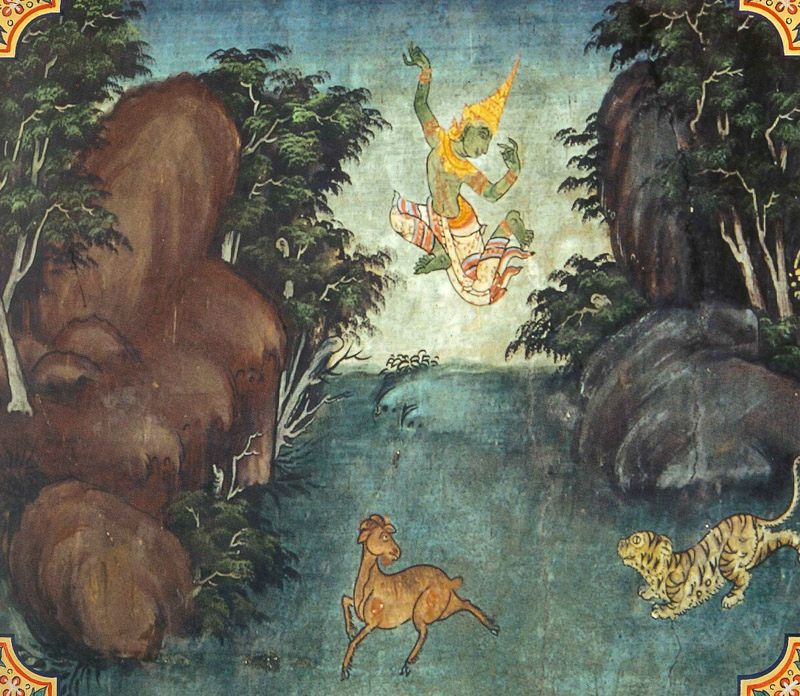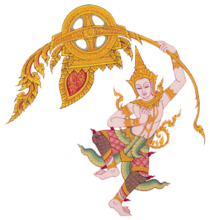
The Bodhisatta was once Indra, king of the gods. A wolf lived on a rock along the Ganges River, and when a flood arose, his rock became an island. Since he was cut off from the shore without food, the wolf planned to follow the precepts for the holy day. The Bodhisatta knew that the wolf was weak-willed, and he wanted to prove it, so he took the form of a goat and stood on the wolf’s rock. As predicted, the wolf decided he would be virtuous another day and chased after the goat. The Bodhisatta escaped all his attacks and the wolf eventually gave up and went to lie down, thinking he hadn’t broken any precepts. Then the Bodhisatta revealed himself and rebuked the wolf for breaking his holy-day vow.
In the Lifetime of the Buddha
One of the Buddha’s top disciples, Upasena, followed additional austerities (such as wearing robes made from discarded fabric and eating only one meal a day) that were recommended but not required by the Buddha. Disciples who followed them earned the special privilege of being able to visit the Buddha at anytime. Some of the young disciples who studied with Upasena normally wore nice clean robes, but they put on rag robes when they wanted to talk to the Buddha so he would come out of seclusion.
One time the Buddha saw piles of rags in these disciples’ quarters and realized what they were doing. He commented that their short-lived practices were like the wolf observing the holy day and told them this story to explain the comparison.
The Buddha did not identify any earlier births other than his own.
